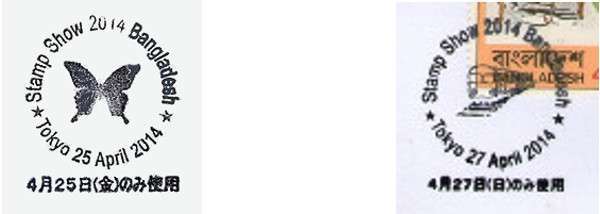The items illustrated on this page are fakes or forgeries or of a questionable nature. A fake item is something completely invented to represent something that does not exist. A forgery is a copy of a genuine item that exists and is generally made to make people think it is a genuine item. The term counterfeit means the same thing.


COVERS
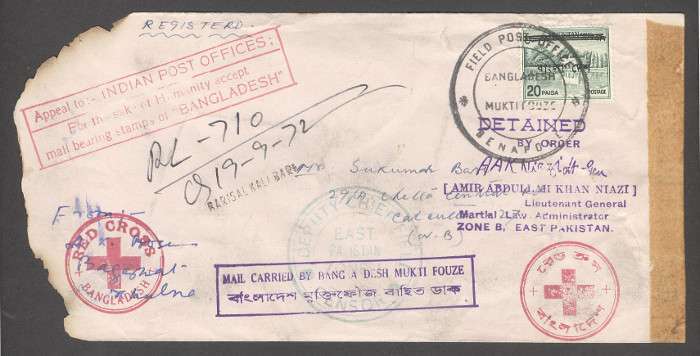

The following eight covers were purchased by the author back in the mid 1970s from a well known Indian dealer, who it turns out is known for dealing in questionable items, as well as genuine material. They are all fakes. Note that the same postage stamps are used on all the covers. During the war the same overprinted Pakistani stamps were not available at all the post offices, and each post office had created it’s own rubber stamp overprint. The stamps on these covers were created for the Jessore Post Office (See above for more information). Many varieties were overprinted and whatever was available at that location would be used. Additionaly, some of the markings on the covers are made with the same rubber stamp (Mail Carried by Bangla Desh Mukti Fouze). The covers are also neatly opened on the edges and are in pristine condition. Similar covers are still offered on the internet at this time. The Indian dealers know they are fakes, but those from Europe and other countries often think they are genuine. These covers and others claimed to have been carried by the Boy Scouts have been heavily faked as there is a good market for them, especially the Boy Scout covers. Genuine covers are very expenseive and scarce. Remember that a high price does not necessarily mean it is genuine.Only purchase from a reputable dealer and always get a second opinion from an expert before buying such items.

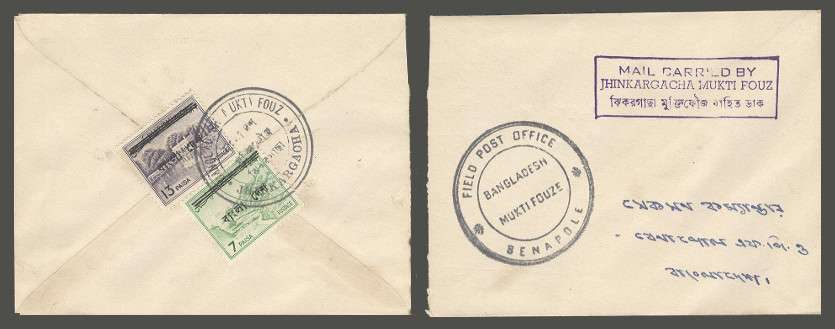

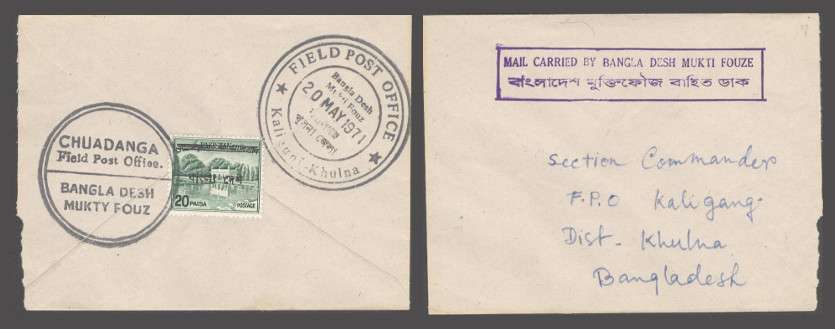
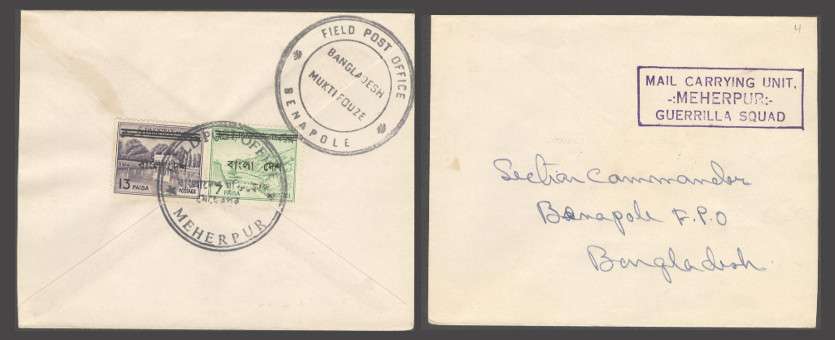
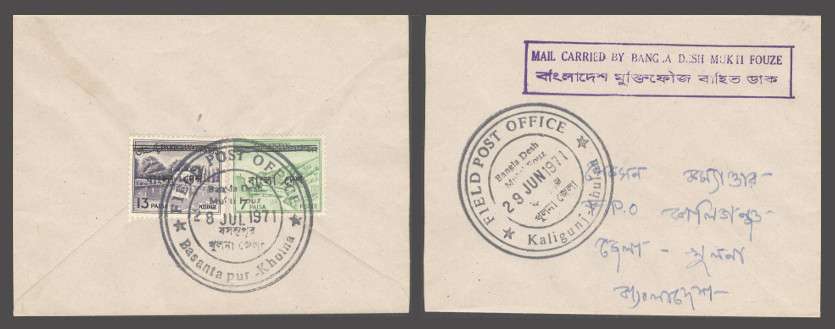
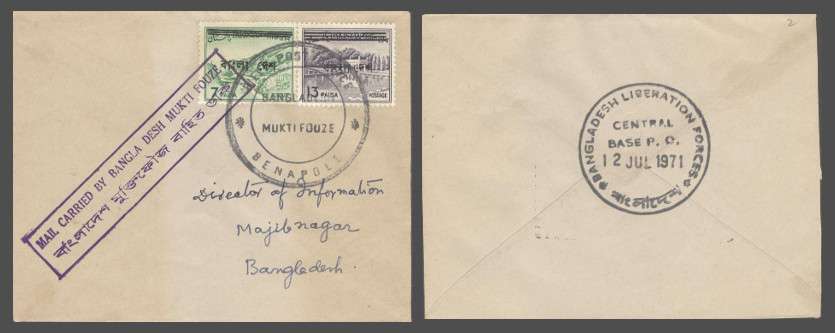


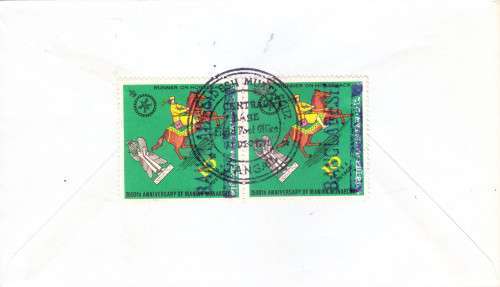
Additional Fake Covers
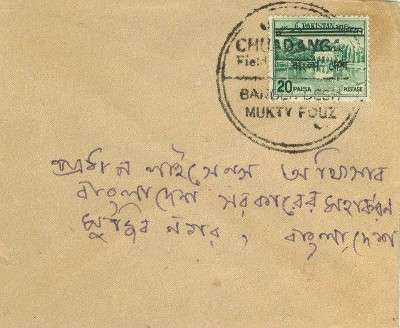

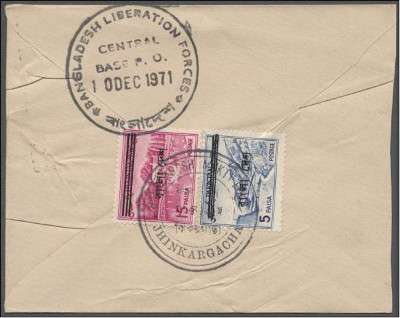
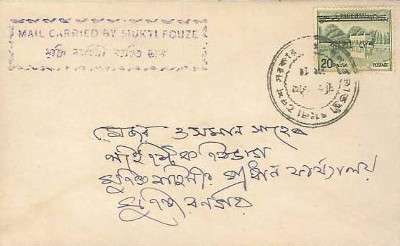
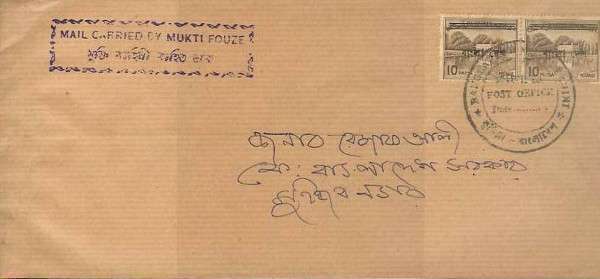
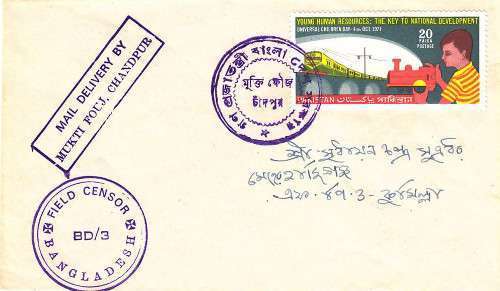
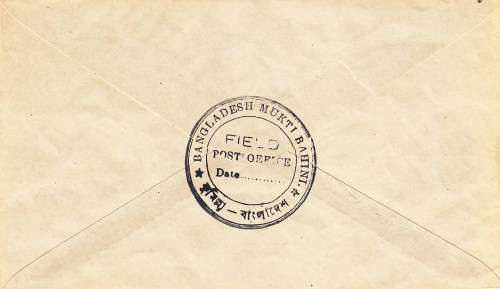
Boy Scout Covers
It is an exciting and heroic idea to think that the Boy Scouts of then East Pakistan (Fighting for a country they then called Bangladesh) would have contributed to the war effort by carrying mail for the liberation and guerrila forces, etc. While it makes a nice story it is largely mythological. Knowing that there is a large market for Boy Scout items, some of the Indian dealers went overboard in their enthusiasm to make money. Hundreds of fake covers were created, claiming to be carried by the Boy Scouts.
One must be realistic about the situation. First of all, the people of the then emerging country spoke Bengali and their language had been surpressed by the Pakistani Government for years. Why would covers be created celebrating this alleged endeavor bear the markings of such in English, and not the language they spoke – Bengali? The answer is very simple. Most collectors of Scout philatelic material are familiar with, or can speak English, and could readily identify with it. Many items were stamped with the name Bangladesh in Bengali and English, stamps, documents, currency, etc., either legally, or illegally, to triumph their liberation and pride in their language.
The post offices in the liberated areas were told to add the name Bangladesh in Bengali and English on the large quantities of Pakistani stamps in the post offices under their control. Each post office was permitted to come up with their own design as there was no way the new government could collect all the stamps from the post offices and overprint them. There was a hodge podge of various issues in the hundreds of post offices. If you look at the fake covers illustrated on these pages, you will notice many have the same stamps, with the same overprint. It would have been physically impossible for the liberation forces to have the same overprinted stamps all over the country. Many Bangladesh collectors, Bangladeshis and foreigners, stay clear of the overprinted stamps as the overprints too were heavily faked by Indian dealers living along the border. They would create their own varieties of overprints and send packets of envelops with the stamps on them to Bangladesh, and have them cancelled at a post office. Later, such was offered as proof that they were genuine and cancelled at a real post office. Plus the dealers then had many varieties to sell.
While it may be true that one or two times a group of Scouts carred some mail, it was not to to the extent that many people would like to believe. By far, the majority of the fake covers were sold to dealers outside of Asia who knew nothing about them, other than what they were told. Some major Indian dealers bought them, knowing they were fakes, but insisted they were genuine. The author of this catalog purchased Mukti Fouz covers from a major Indian dealer back in the 1970s, along with sets of mint overprinted stamps. Both the covers and the overprints on the stamps turned out to be fake and the dealer is still selling them today, insisting they are genuine.

This cover is not said to be carried by the Boy Scouts, but it bears a Boy Scout overprinted stamp from Pakistan, with a Bangladesh overprint printed over it. Very few of the oveprints were printed as the post offices did not have the facilities to do any printing. They were largely done with rubber stamps and applied by hand to the stamps. It is doubtful that this printed overprint of the Bangladesh overprint is genuine. The Pakistani stamp was for an event that took place in 1959 and the War of Liberation was in 1971, that is 12 years later. It is doubtful that this stamp would have been in a post office at that late date. New varieties of overprinted stamps are constantly appearing. Topicals are very common.
The cover has fake cancellations and is allegedy from Chuadanga and was addressed to Mujibnagar by someone who was not very good at writing in English.

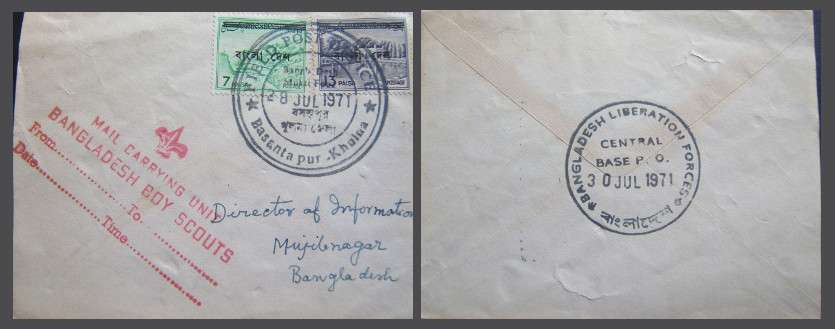


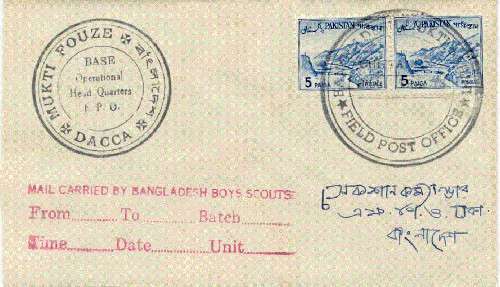
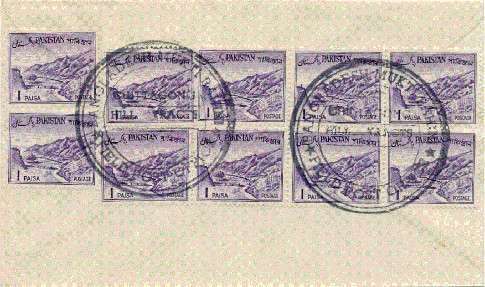

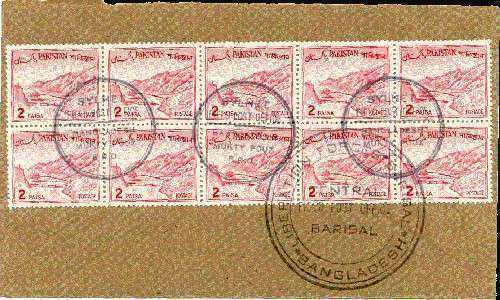
1972
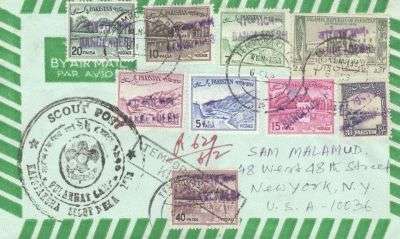
1981
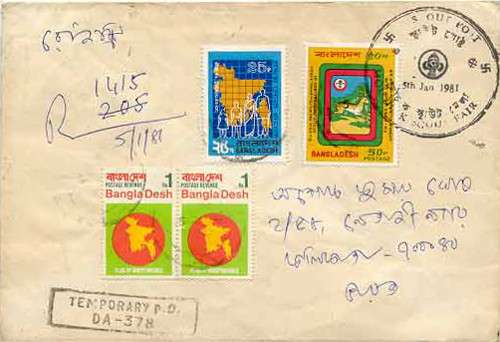
9 October 1995 - Flowers of Bangladesh (2nd series)
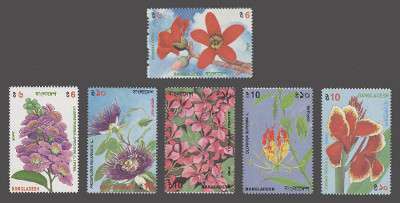
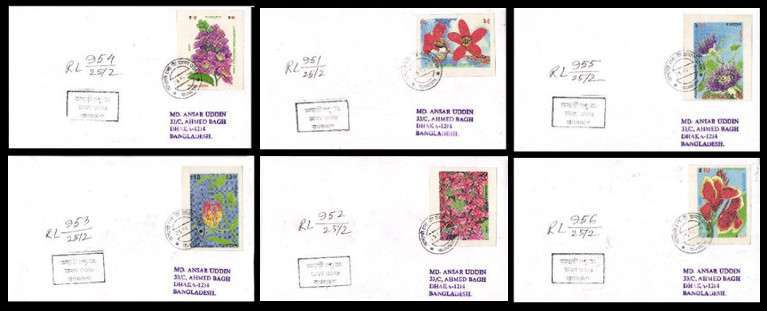
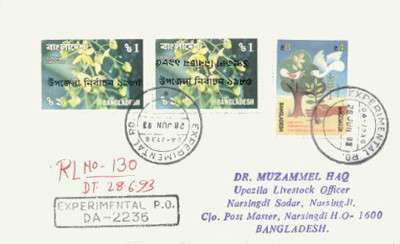

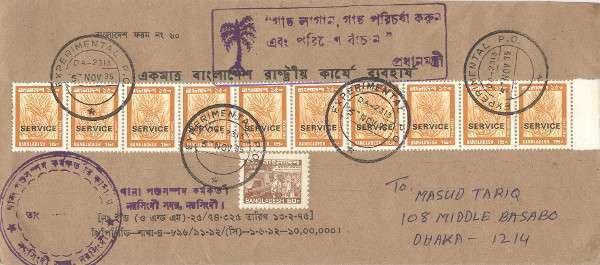
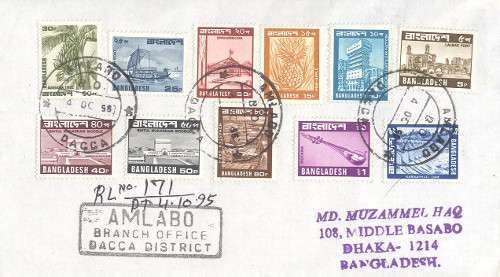
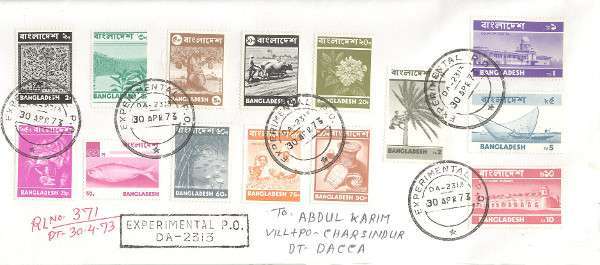

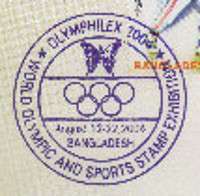
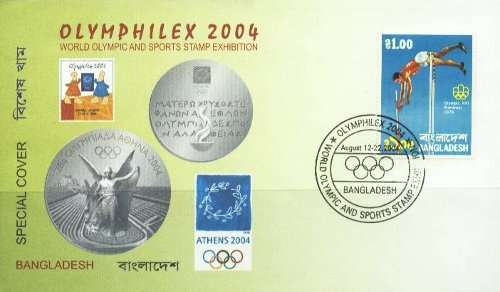

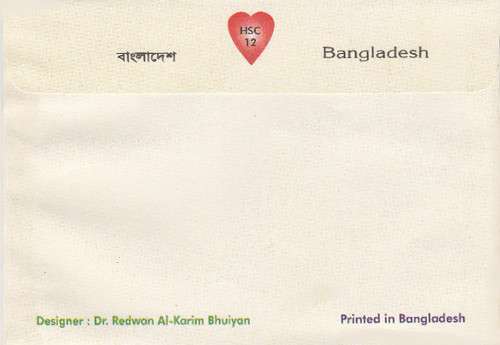
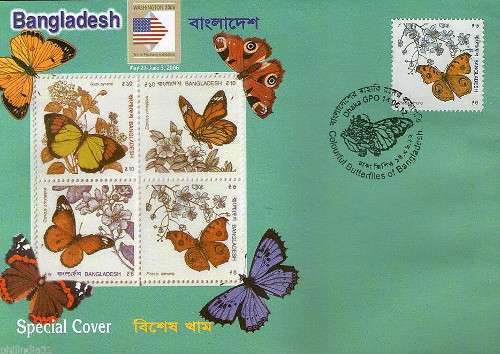
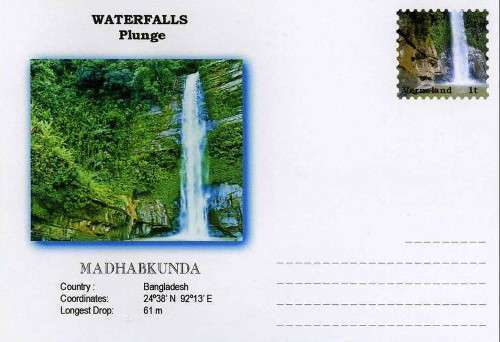
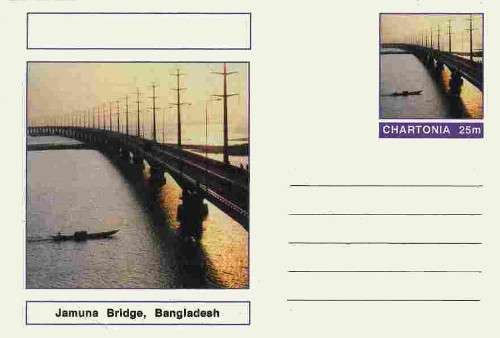


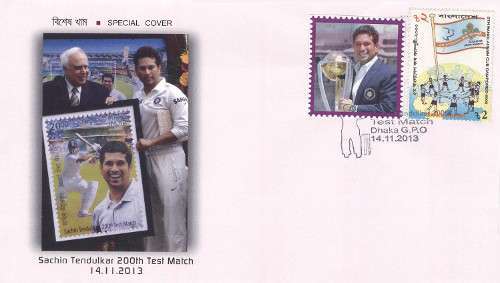
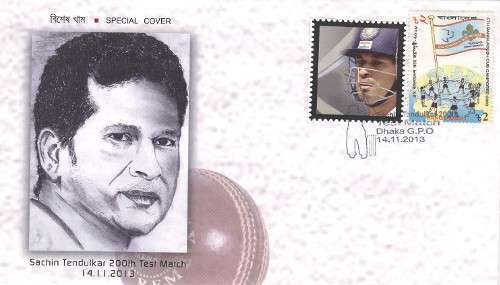
2014

